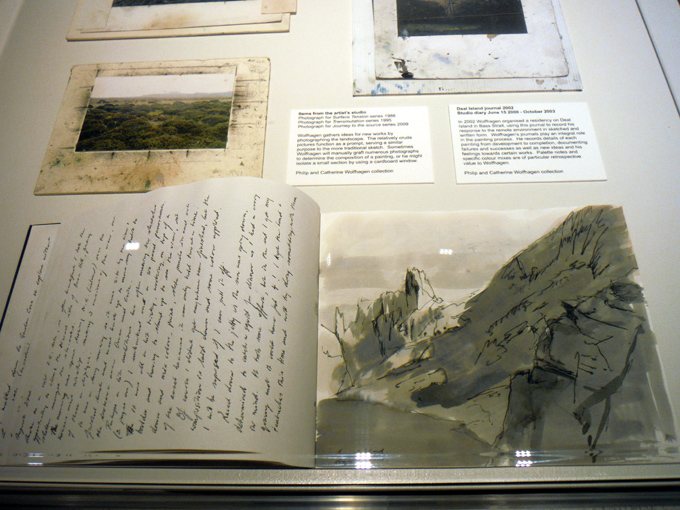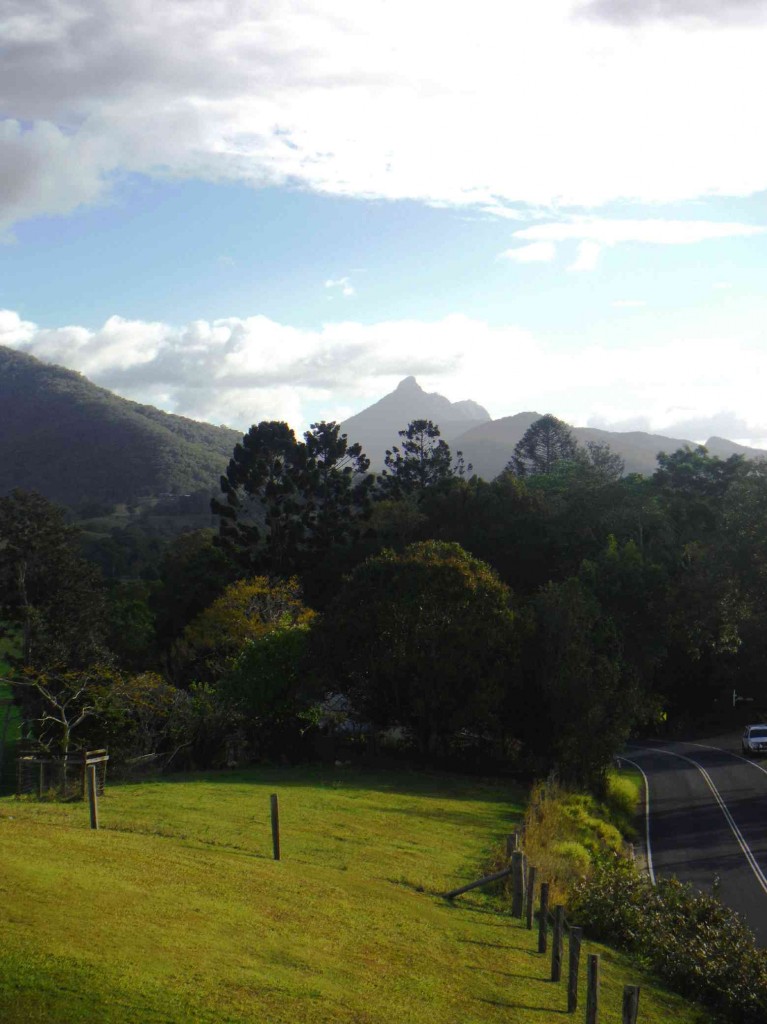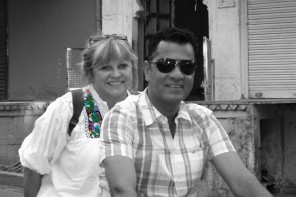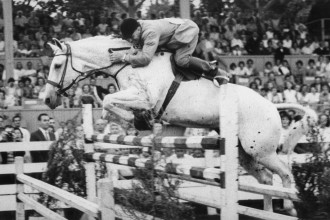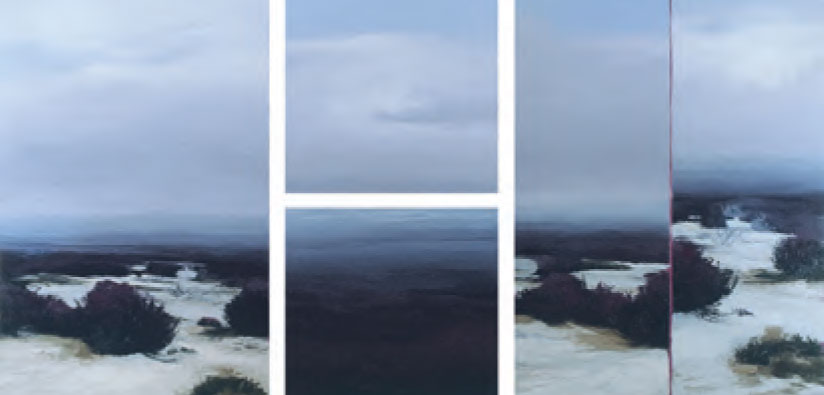
Philip Wolfhagen: Approach to First Lagoon 2001, oil and beeswax on linen, four panels, 151 x 297 cm.
Philip Wolfhagen’s luminescent landscape paintings are currently on display at the Tweed Regional Gallery, writes artist Bernadette Curtin, who enjoyed the combination of inner and outer views.
Philip Wolfhagen is a Tasmanian artist, who has been painting the Tasmanian landscape for many years. Primarily studio based, Wolfhagen is a highly disciplined artist who works from still images and photographs using oil-paint and beeswax in the time-honoured tradition of English and French masters, such as John Constable, Turner and Claude Lorrain.
The day I went to see this exhibition, which features over fifty works of art from public and private collections, it was a cold wet day, the light diffused behind heavy banks of cloud hanging over the mountains which created an enjoyable synchronicity between the paintings inside and the majestic landscape that can be seen from the windows of the gallery.
It’s not hard to appreciate Wolfhagen’s work. Over the 25 years of his painting career this artist has refined the mood and palette of his paintings – more recently adding the skeletons of deciduous trees to the foreground, which serve to pick up the light or break up up the view into the distant horizon. Wolfhagen’s focus on the Tasmanian landscape where agricultural land borders wilderness has been an enduring theme, and his subjects are the sky, clouds, the ocean and the landscape of his island home. Occasionally Wolfhagen adds some reference to human presence – lights from a house in the distance, for example. He often chooses a particular time of day – dusk or twilight, to suggest the quietness of that time of day. Dusk seems to be a particular time of day for reflection, reminding us of our fragility, of our slow cyclical pathway to our completion of one more physical life. (How Have I lived this Day?)
Wolfhagen himself writes: ‘I am only really interested in painting places I know and love, the places that are meaningful for me, I have no desire to paint a landscape for the sake of it.’
An interesting aspect to this exhibition are the display boxes in the gallery explaining some of Wolfhagen’s methodical techniques. The artist uses pigments mixed with linseed oil, with the addition of beeswax, to obtain a malleable, slow drying medium and to add an impasto surface to the paintings. His colours are often low-key and subtle shifts of tone create a mood and time of day and season. In one display box there was a colour swatch of gradated mixes of umbers and siennas mixed with white. Another box displays sketchbooks and photos that the painter uses as references for the paintings.
In the gallery there are groups of small-scale studies, painting sketches so fully realised they are complete within themselves, and some of these are then translated into large-scale works which almost literally engulf the viewer, reminding us of how we feel when standing in a grand natural setting.
At the end of my visit I stood outside in the winter wind, and I felt and saw the majestic mountains – the sun casting light behind huge clouds full of rain, Mt Warning in the distance, the mountains forming silhouettes against the late afternoon light while in the foreground, fields of lime green caught rays of sunlight. It was a perfect moment for absorbing both the exhibition and the nature around me, and to spend a little time pondering on our various ways of responding and paying homage to nature’s majesty.

